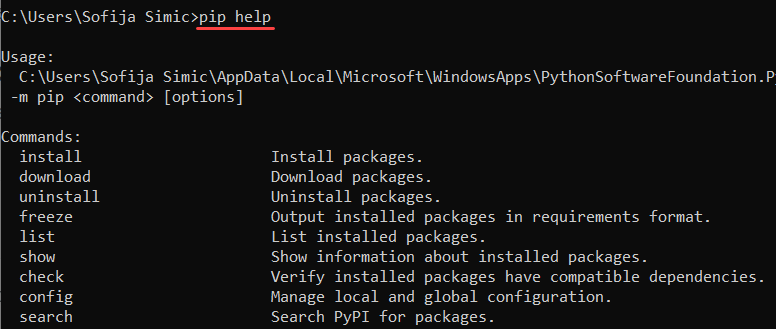

Psst! To view all your installed libraries, enter: pip list You are good to go! This is the part where you get to feel like Neo! See Installing Python Modules in the Python Documentation for more detailed instructions. If successful, you should see activity that looks similar to the below screenshot, where I am installing openpyxl, an additional Python Excel library you’ll likely want. Pandas is a super useful library for wrangling spreadsheet data, AKA “tabular” data. “pip is already installed if you are using Python 2 >=2.7.9 or Python 3 >=3.4 downloaded from or if you are working in a Virtual Environment created by virtualenv or pyvenv.” Enter This in Your Terminal Consider using a newer version like Python 3.10!Īccording to the pip installation documentation: In December 2021, Python 3.6 reached “end of life phase”. But certain versions such as Python 3.2 or the Python 2.7 that came stock on my improbably still functioning 2008 black Macbook, for example, may not have it installed.

Python comes with pip now, no setup is required. Python 2 reached end of life on January 1st, 2020. There’s probably a library for that!įirst, Some Python Version Caveats + History With pip, you’ll feel like Neo when installing new modules. You’ll find Windows and Linux commands for venv setup (recommended).
#Install pip for python 2.7 in eclipse how to#
This post will teach you some Python history, show how to install pandas, and help you troubleshoot problems if it’s not working. Enter pip, Python’s handy package manager and people’s champion. Inevitably, you’ll want to install new libraries from Python’s rich ecosystem of external modules.

My favorites are shutil, glob, datetime, time, os (operating system), re (regular expressions) and webbrowser. Python comes with a bunch of standard modules.


 0 kommentar(er)
0 kommentar(er)
